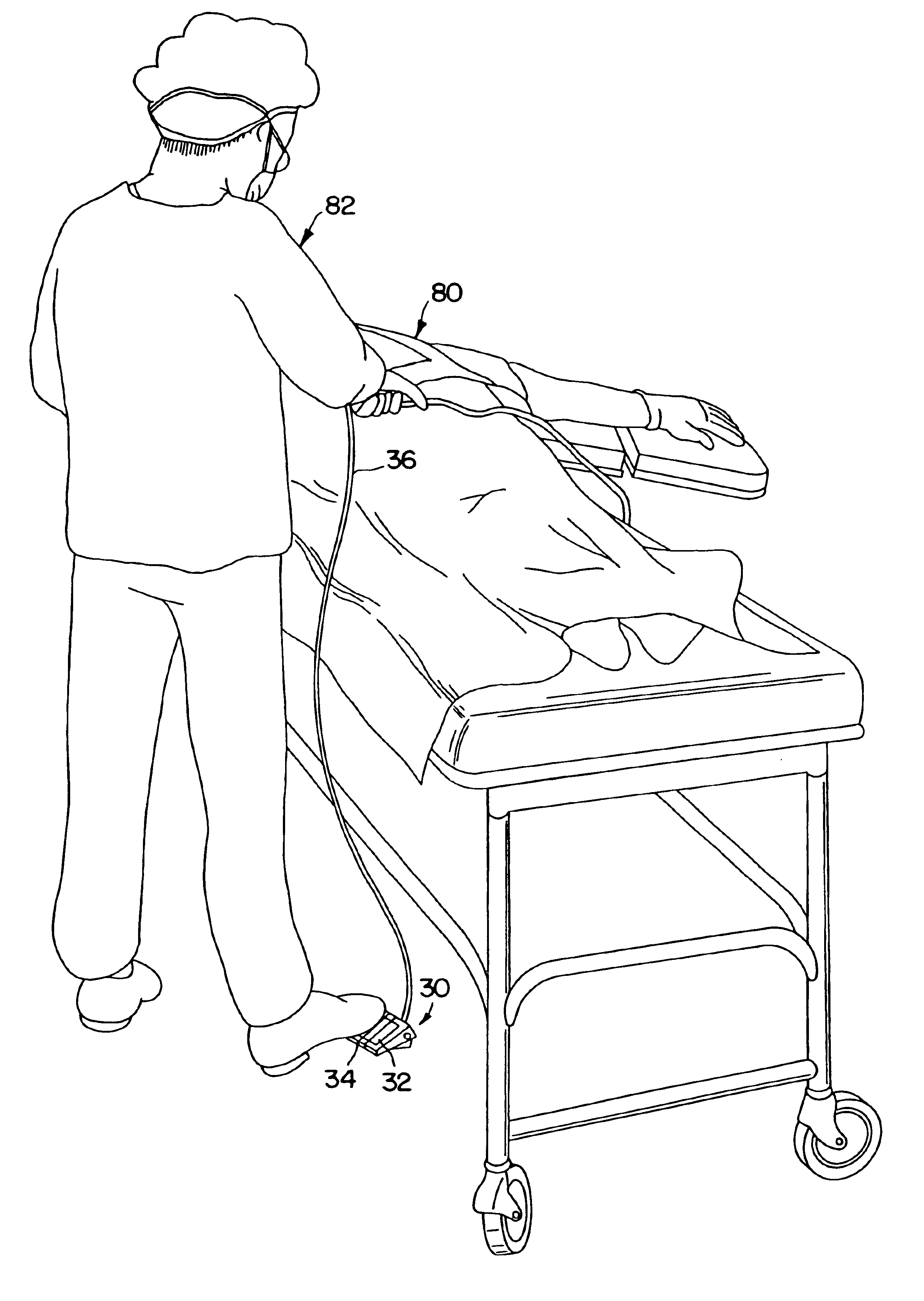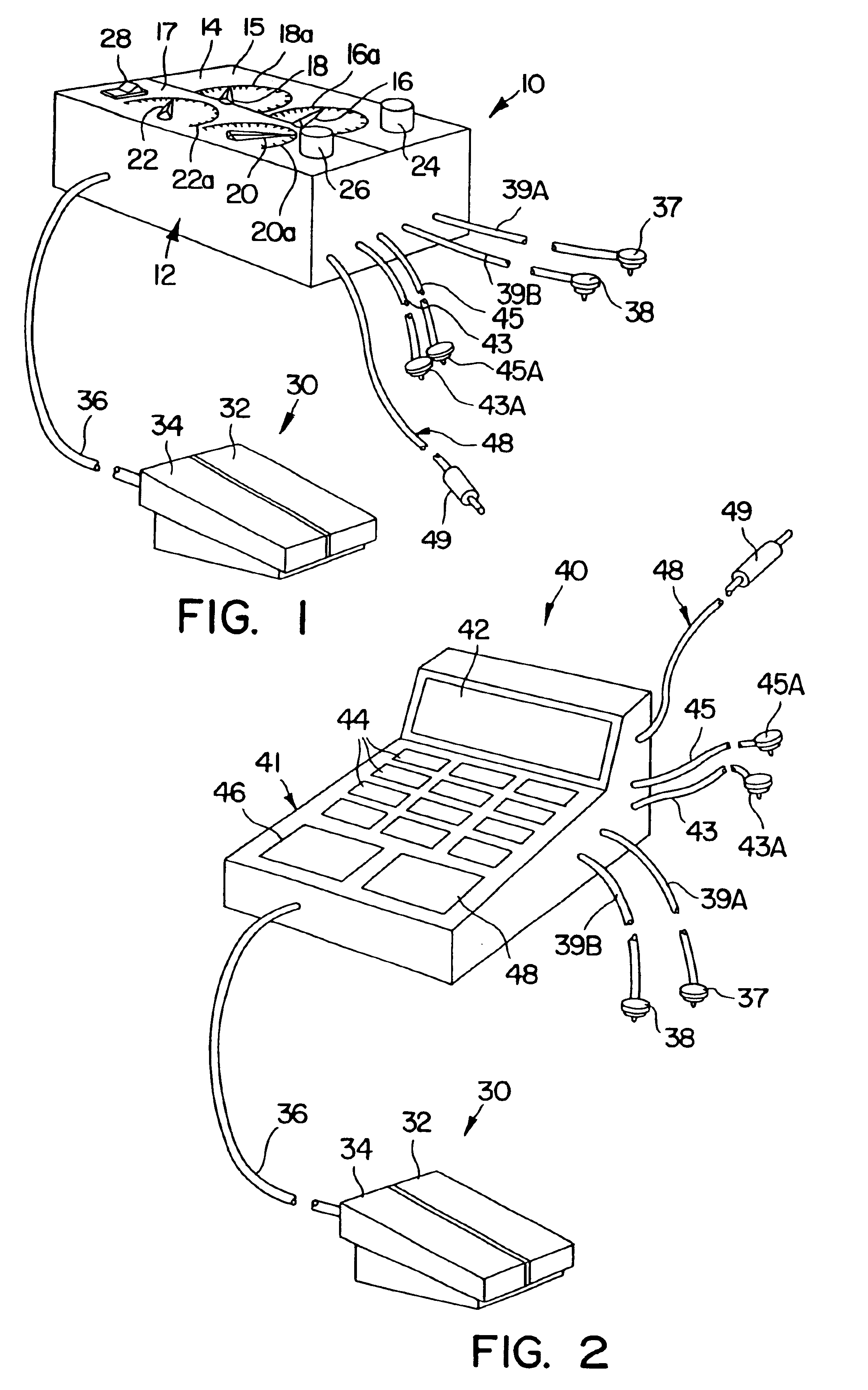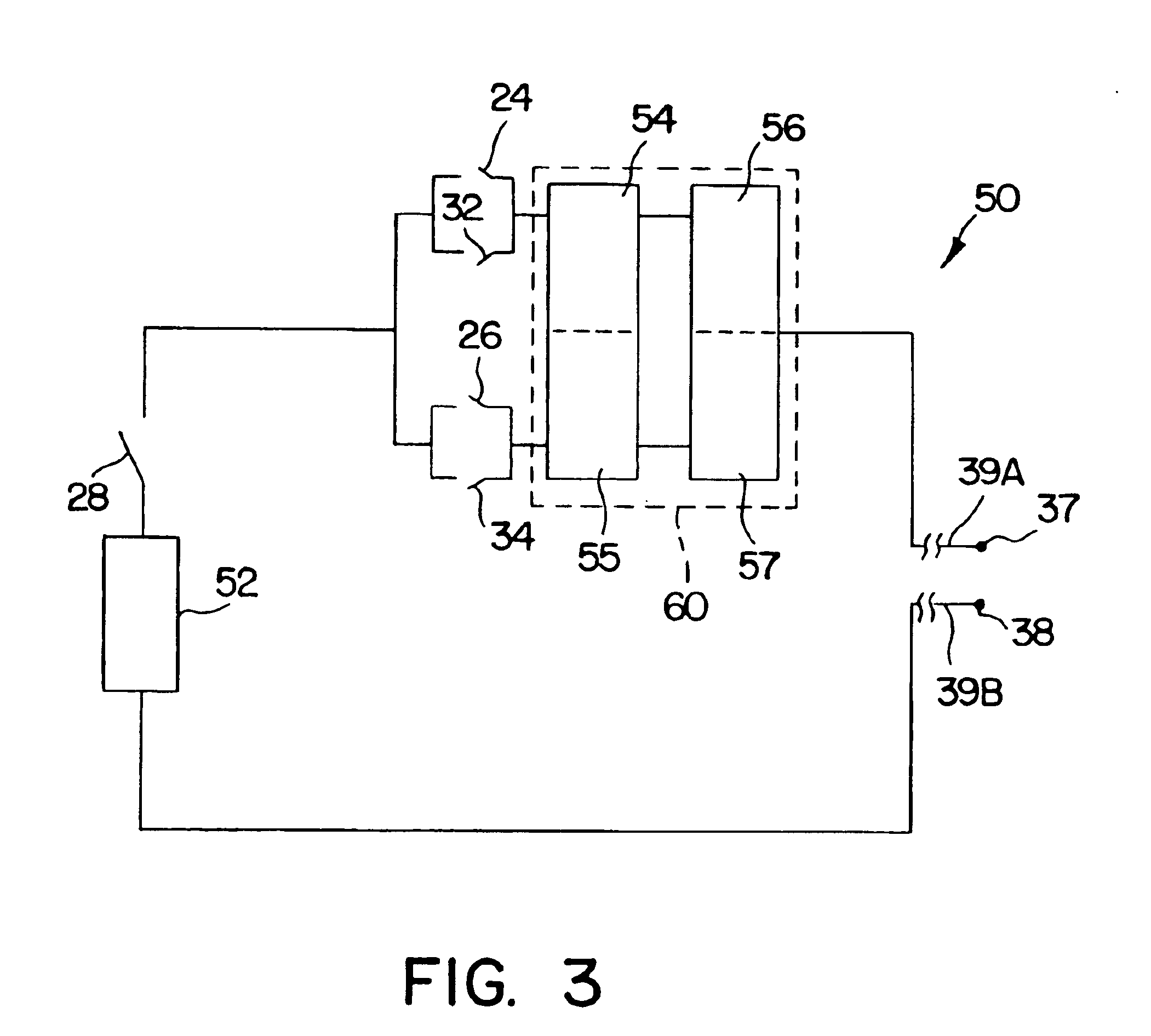Method and device for electronically controlling the beating of a heart
a technology of electronic control and heart rhythm, applied in the field of methods and devices, can solve the problems of irreversible nerve damage, inability to take a viable approach, and the placement of electrodes either around the nerve bundle or into the neural perineum also poses a significant risk
- Summary
- Abstract
- Description
- Claims
- Application Information
AI Technical Summary
Benefits of technology
Problems solved by technology
Method used
Image
Examples
Embodiment Construction
[0035]Referring, now to FIG. 1, a first embodiment of an electro-stimulation device 10 includes a housing 12 and a control panel 14 located on an upper surface of the housing 12. The control panel 14 is divided into a heart stimulation control area 15 and a heart destimulation control area 17. The stimulation control area 15 includes a rotary dial 16 and scale 16A for setting the amount of current that is passed to the 20 heart, and a rotary dial 18 and scale 18A for setting the duration or frequency of cycles that the current is passed to the heart to start the heart beating. Likewise, the destimulation control area 17 includes a rotary dial 20 and scale 20A for setting the amount of current that is passed to the heart, and a rotary dial 22 and scale 22A for setting the duration that the current is passed to the heart to stop the heart from beating. Controls for regulating pulse width, pulse voltage, pulse phases and / or burst duration may also be added. A normally open stimulation ...
PUM
 Login to View More
Login to View More Abstract
Description
Claims
Application Information
 Login to View More
Login to View More - R&D
- Intellectual Property
- Life Sciences
- Materials
- Tech Scout
- Unparalleled Data Quality
- Higher Quality Content
- 60% Fewer Hallucinations
Browse by: Latest US Patents, China's latest patents, Technical Efficacy Thesaurus, Application Domain, Technology Topic, Popular Technical Reports.
© 2025 PatSnap. All rights reserved.Legal|Privacy policy|Modern Slavery Act Transparency Statement|Sitemap|About US| Contact US: help@patsnap.com



